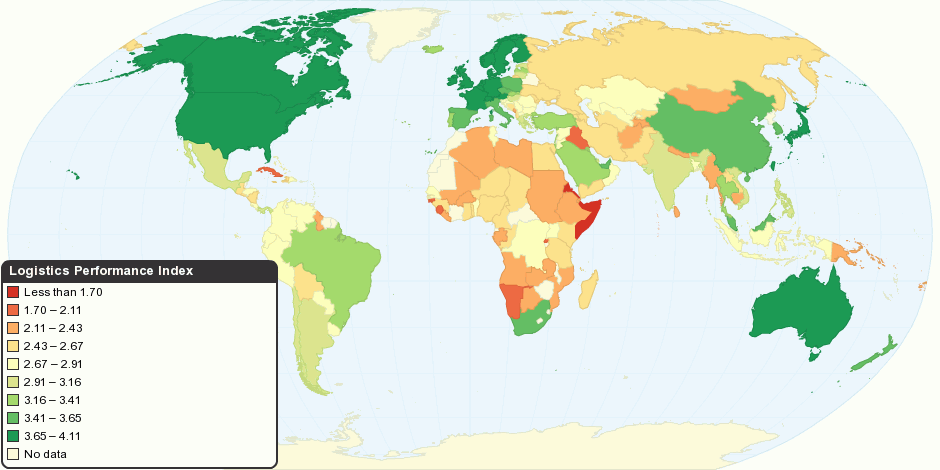This map shows 2010 Logistics Performance Index (LPI). The LPI is a benchmarking tool created to help countries identify the challenges and opportunities they face in their performance on trade logistics and what they can do to improve their performance. The index ranges from 1 to 5, with a higher score representing better performance.
What is the Logistics Performance Index?
Based on a worldwide survey of global freight forwarders and express carriers, the Logistics Performance Index is an interactive benchmarking tool developed by the World Bank that measures performance along the logistics supply chain within a country. Allowing for comparisons across 155 countries, the index can help countries identify challenges and opportunities and improve their logistics performance. The World Bank conducts the survey every two years.
How is the Logistics Performance Index calculated?
The Logistics Performance Index (LPI) summarizes the performance of countries in six areas that capture the most important aspects of the current logistics environment:
- Efficiency of the customs clearance process.
- Quality of trade and transport-related infrastructure.
- Ease of arranging competitively priced shipments.
- Competence and quality of logistics services.
- Ability to track and trace consignments.
- Frequency with which shipments reach the consignee within the scheduled or expected time.
Data are from LPI surveys conducted by the World Bank in partnership with academic and international institutions and private companies and individuals engaged in international logistics. 2009 round of surveys covered more than 5,000 country assessments by nearly 1,000 international freight forwarders. Respondents evaluate eight markets on six core dimensions on a scale from 1 (worst) to 5 (best). The markets are chosen based on the most important export and import markets of the respondent's country, random selection, and, for landlocked countries, neighboring countries that connect them with international markets. Scores for the six areas are averaged across all respondents and aggregated to a single score using principal components analysis.
For more information about the survey methodology and index construction methodology please follow reference link below.
15 years ago

